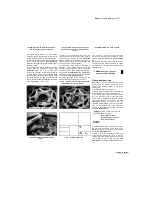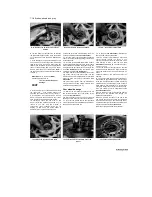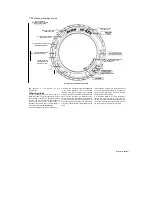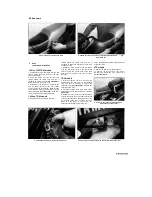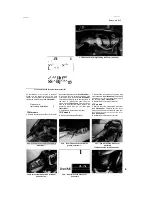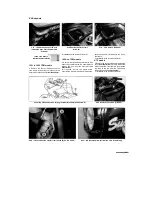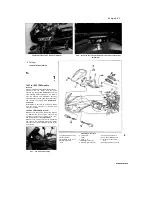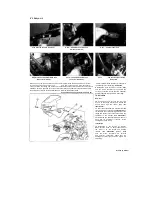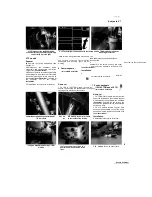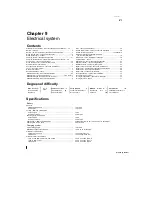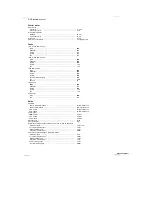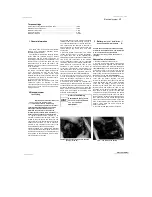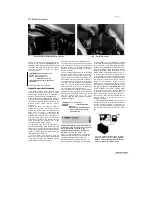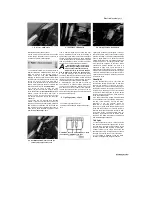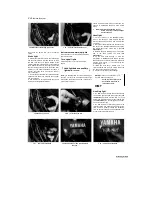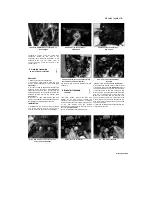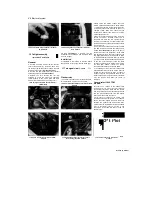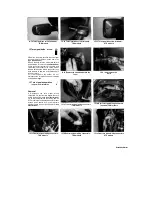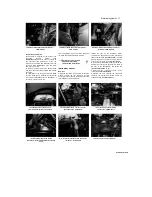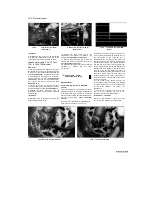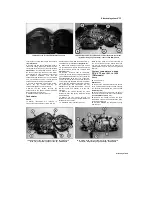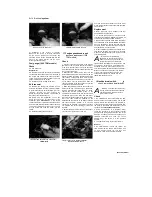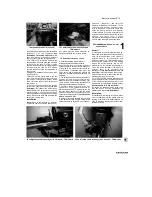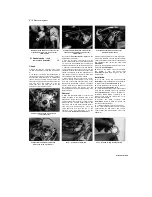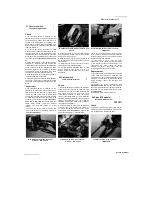
UNREGISTERED VERSION 0
UNREGISTERED VERSION OF PICTURED
Electrical system 9*3
Torque settings
Transmission output shaft retainer plate bolts ...............................................
10Nm
Starter motor mounting bolts .........................................................................
10 Nm
Alternator rotor screws ...................................................................................
7 Nm
Pick-up coil screws .....................................................................................
4 Nm
Alternator rotor bolt .....................................................................................
130 Nm
1 General information
All models have a 12-volt electrical system
charged by a three-phase alternator with a
separate regulator/rectifier.
The regulator maintains the charging system
output within the specified range to prevent
overcharging, and the rectifier converts the ac
(alternating current) output of the alternator to dc
(direct current) to power the lights and other
components and to charge the battery. The
alternator rotor is mounted on the left-hand end
of the crankshaft.
The starter motor is mounted on the bottom of
the engine. The starting system includes the
motor, the battery, the relay and the various
wires and switches. A safety cut-out circuit
prevents the starter motor operating unless the
transmission is in neutral or the clutch lever is
pulled in and the sidestand is up
Note:
Keep in mind that electrical parts, once
purchased, cannot be returned. To avoid
unnecessary expense, make very sure the faulty
component has been positively identified before
buying a new part.
Electrical system
-
fault finding
Warning: To prevent the risk of fm\
short circuits, the ignition (main)
^^^^ switch must always be OFF and
the battery negative (-ve) terminal
should be disconnected before any of the
bike's other electrical components are
disturbed. Don't forget to reconnect the
terminal securely once work is finished or if
battery power is needed for circuit testing.
1 A typical electrical circuit consists of an
electrical component, the switches, relays, etc.
related to that component and the wiring and
connectors that hook the component to both the
battery and the frame. To aid in locating a
problem in any electrical circuit, refer to the
wiring diagrams at the end of this Chapter.
2 Before tackling any troublesome electrical
circuit, first study the wiring diagram (see end of
Chapter) thoroughly to get a complete picture of
what makes up that individual circuit. Trouble
spots, for instance, can often
be narrowed down by noting if other components
related to that circuit are operating properly or
not. If several components or circuits fail at one
time, chances are the fault lies in the fuse or
earth connection, as several circuits often are
routed through the same fuse and earth
connections.
3 Electrical problems often stem from simple
causes, such as loose or corroded connections
or a blown fuse. Prior to any electrical fault
finding, always visually check the condition of the
fuse, wires and connections in the problem
circuit. Intermittent failures can be especially
frustrating, since you can't always duplicate the
failure when it's convenient to test. In such
situations, a good practice is to clean all
connections in the affected circuit, whether or not
they appear to be good. All of the connections
and wires should also be wiggled to check for
looseness which can cause intermittent failure.
4 If testing instruments are going to be utilised,
use the wiring diagram to plan where you will
make the necessary connections in order to
accurately pinpoint the trouble spot.
5 The basic tools needed for electrical fault
finding include a battery and bulb test circuit, a
continuity tester, a test light, and a jumper wire. A
multimeter capable of reading volts, ohms and
amps is also very useful as an alternative to the
above, and is necessary for performing more
extensive tests and checks.
Refer
to
fault Finding
HINT
Equipment in the
Reference
section for details
of how to
use electrical
test
equipment.
3 Battery
-removal, installation, |^
inspection and maintenance ;&,
Caution: Be extremely careful when handling
or working around the battery. The electrolyte
is very caustic and an explosive gas
(hydrogen) is given off when the battery is
charging.
Removal and installation
1 Remove the seat(s) (see Chapter 8).
2 On 1991 to 1995 TDM models, TRX and XTZ
models, unscrew the negative (-ve) terminal bolt
first and disconnect the lead from the battery
(see illustration).
Lift up the insulating cover to
access the positive (+ve) terminal, then unscrew
the bolt and disconnect the lead. Release the
battery strap or holder, where fitted, and remove
the battery from the bike
(see illustration).
3
On 1996-on TDM models, lift the insulating
cover from the battery negative (-ve) lead
terminal on the frame, then remove the terminal
screw and detach the lead. Lift the insulating
cover from the battery positive (+ve) lead
terminal on the starter relay, then remove the
terminal screw and detach the lead. Fit the
insulating covers back over the lead ends and
tape them in place to prevent the lead ends
contacting each other and shorting the battery
when it is being manoeuvred out of the frame.
Remove the two screws securing the battery box,
then manoeuvre the box around the right-hand
side of the shock absorber and draw it out of the
bike. If required, disconnect the leads from the
battery, noting which fits where, and lift the
battery out of its box.
4 On 1991 to 1995 TDM models, if required,
UNREGISTERED VERSION 01
Sianed by Stalker
UNREGISTERED VERSION OF PICTURED
2
3.2a Detach the negative lead first, then the
positive (arrowed)...
3.2b ... and remove the battery

